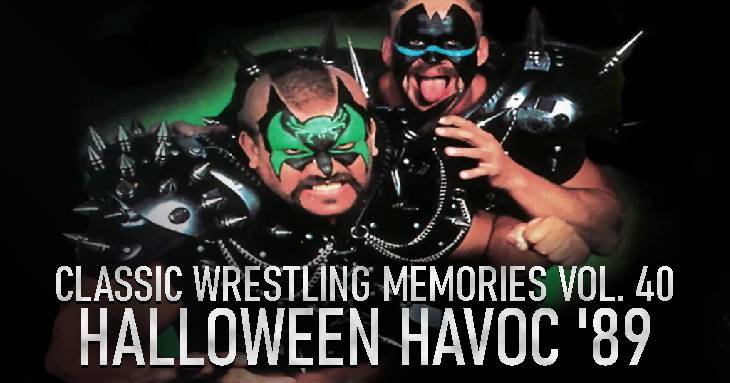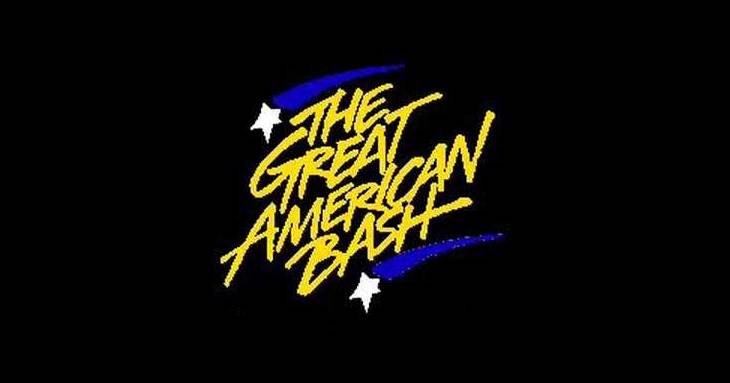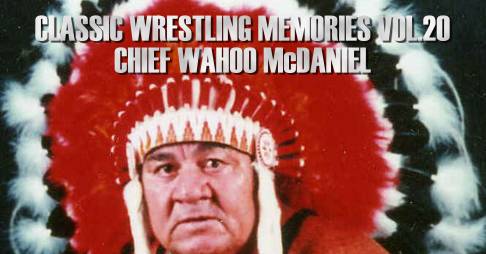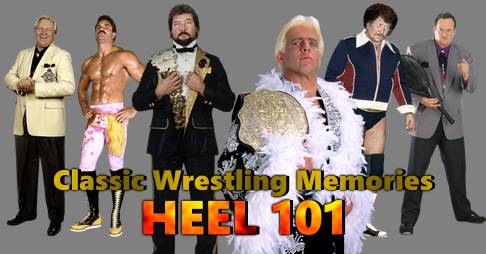Podcast: Play in new window | Download | Embed
Subscribe: RSS

October is here and so is our annual episode devoted to WCW’s Halloween Havoc. This year we look at Halloween Havoc 1990 which saw Sting defend the NWA World Heavyweight Championship against Sid Vicious in a match that had one of the craziest finishes in the history of pro wrestling. And that is saying something…
4:30 – Pro Wrestling in 1990
Both WCW and WWF had new faces as top guys in 1990 in the forms of Sting and The Ultimate Warrior respectively. Coincidentally, Sting and Warrior broke into wrestling as a tag team called The Blade Runners. Other top stars in WCW at the time were Lex Luger, Stan Hansen, The Freebirds, and The Steiner Brothers.
10:00 – Storylines and Angles
It’s worth mentioning that the version on Peacock and WWE Network is the same as the home video release from 1990. This version omits several undercard matches, likely due to videotape time limitations.
Express vs. Express
The Midnight Express (Bobby Eaton and Stan Lane) attacked Robert Gibson of The Rock & Roll Express and injured his knee. Gibson injured his knee in real life so this storyline was made to explain his absence. Former NWA World Champion Tommy Rich stepped in to aid Ricky Morton against The Midnights.
The Freebirds vs. The Renegade Warriors
Neither team were champions, but usually, the winner of a match on a major PPV would be seen as the next contender for tag team titles.
The US Tag Team Titles
The Steiner Brothers were well on their way to being a top tag team. The two won the NWA US Tag Championship from The Midnight Express.
World Tag Team Titles
The World Tag Champions, Doom (Ron Simmons and Butch Reed) defended the titles against Ric Flair and Arn Anderson. This makes for a heel vs. heel match. However, the crowd treated Flair and Arn like babyfaces
US Title
Lex Luger as a heel defeated a babyface Michael Hayes for the United States Championship in the summer of 1989 and held the title until this event. At 523 days, it is to this day still the longest US Title reign. Luger also turned babyface during this reign while Hayes turned heel to reform The Freebirds with Jimmy Garvin.
Stan Hansen was working for WCW between stints in All Japan Pro Wrestling.
Main Event Storyline
Sting became the top babyface in 1990 by defeating Ric Flair for the NWA Title at The Great American Bash. He had actually joined The Horsemen in late 1989 when Arn Anderson returned to WCW after a year-long stint in The WWF. However, Arn’s longtime tag partner, Tully Blanchard, failed a drug test while in WWE so WCW refused to hire him. The Horsemen reshuffled their lineup with Ole Anderson taking Blanchard’s place. This was the first time The Horsemen were presented as a babyface faction as they had been the top heels for Jim Crockett Promotions for the past few years.
The babyface Horsemen run was short-lived. The Horsemen turned on Sting a few months later because Sting challenged Flair to a match for the NWA Title. Unfortunately, Sting suffered a legitimate knee injury at Clash of the Champions when he ran out during a six-man cage match and tried to climb into the cage. The injury put Sting on the shelf for several months and delayed the match. Barry Windham returned to WCW around this time and rejoined The Horsemen. Ole retired from in-ring competition in the Spring of 1990 so then up-and-coming monster Sid Vicious joined the group.
The Main Event Match
The Sting/Vicious main event at Halloween Havoc 1990 went down in history as having one of the craziest finishes of all time. The match spilled to the floor where Sid inexplicably seemed to run away. Sting chased after him and disappeared backstage. A few moments later, the two seemingly ran back into the ring where Sting tried to slam Sid. However, he collapsed under the weight of the 6’9″ Sid and got pinned. Sid was even announced as the new champion until the real Sting ran to the ring with his arm tied up with a rope. It turns out The Horsemen had tied Sting up backstage and Barry Windham went to the ring dressed in an identical outfit. The referee promptly restarted the match and Sting rallied to retain the title.
1:01:30 – The Fallout
There was no rematch or follow-up between Sting and Vicious after Halloween Havoc 1990. WCW’s next PPV was Starrcade in December 1990. Two teams that won matches at Halloween Havoc (Morton/Rich and The Freebirds) would go on to face each other. Doom would again face The Horsemen, only this time it was a Street Fight against Arn Anderson and Barry Windham due to Flair being allegedly injured before the PPV. Starrcade ’90 saw Sting finally defend the title against The Black Scorpion.
JoSx1SqhOtDipM4WmvjJ



